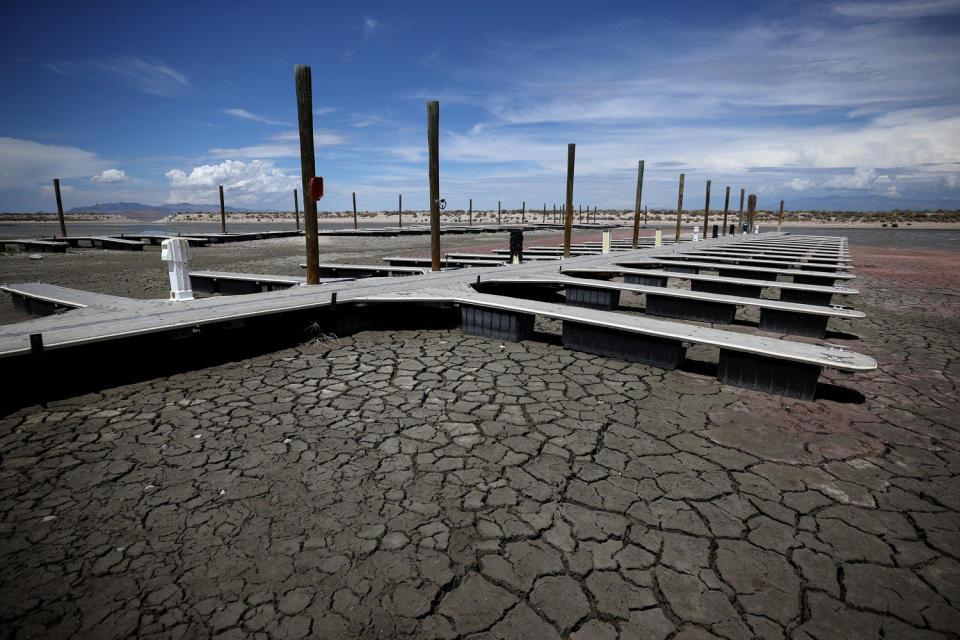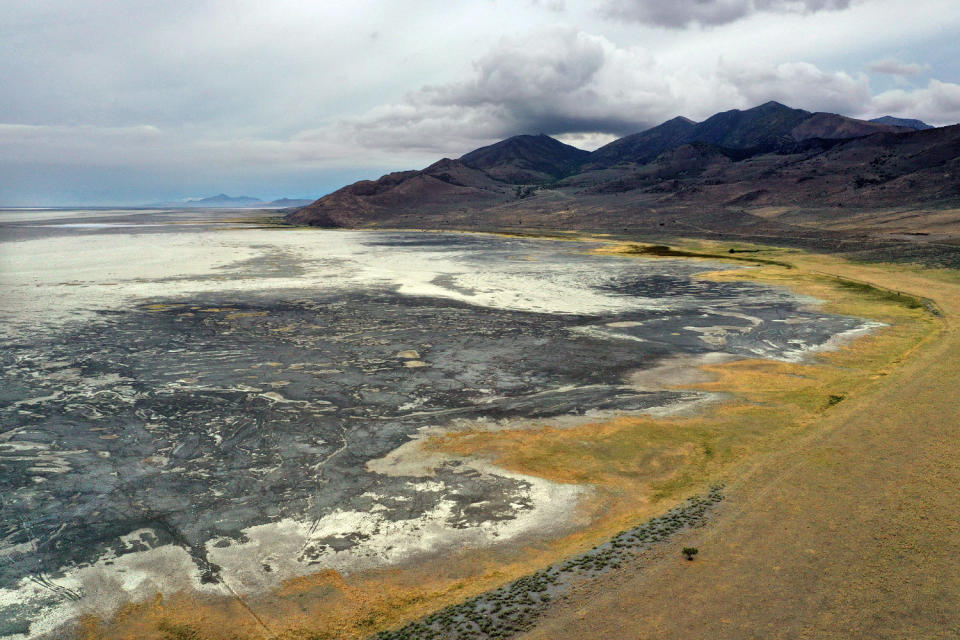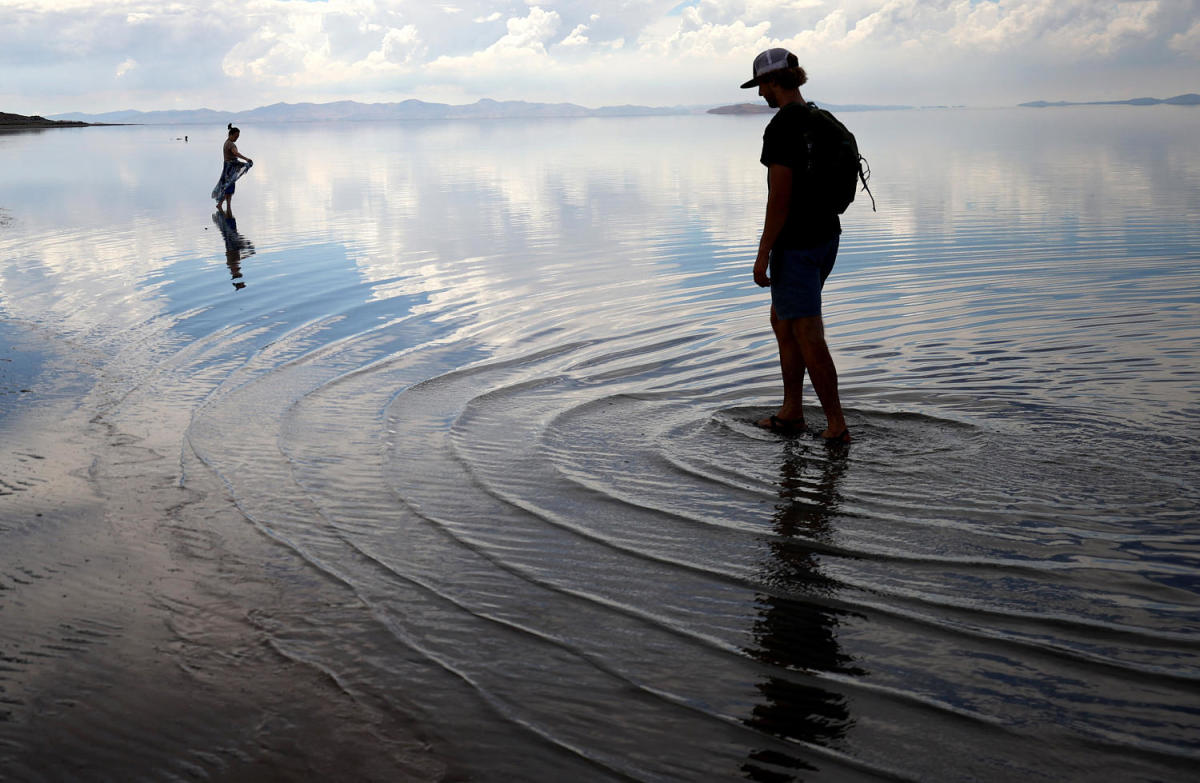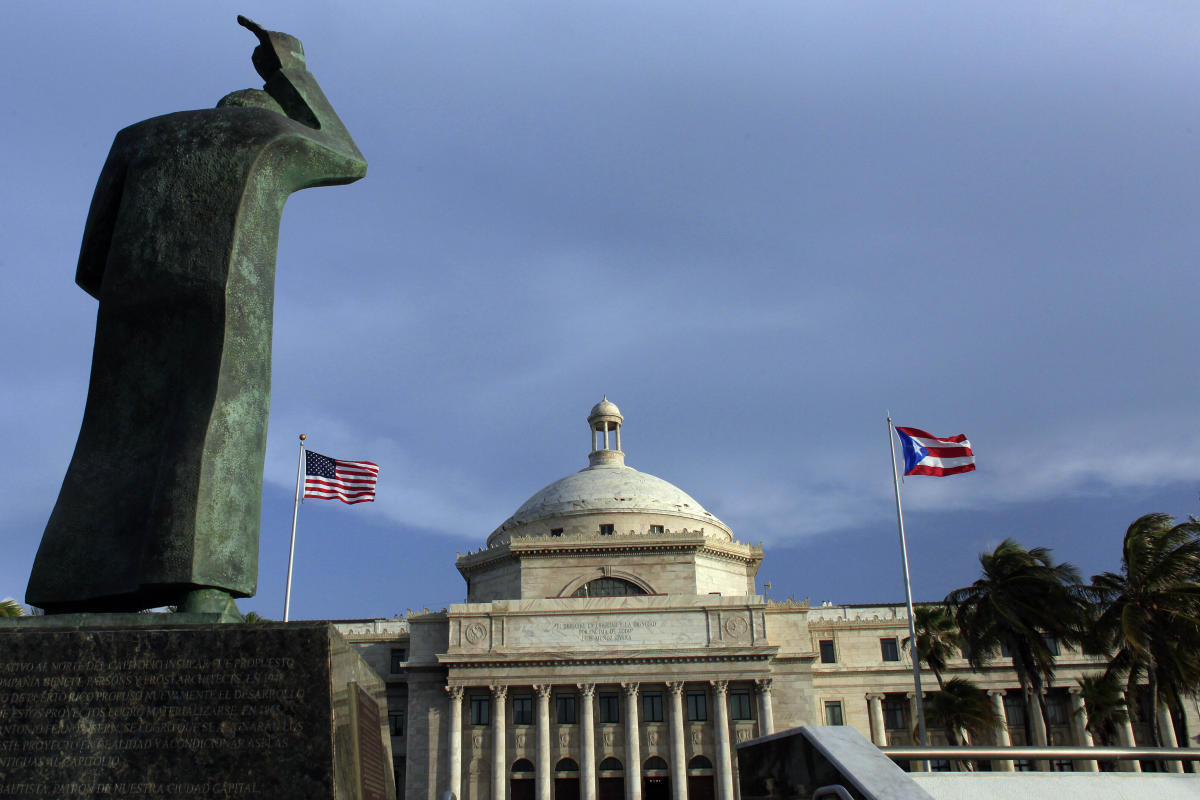As the Great Salt Lake shrinks and scientists fret about storms of toxic dust and its potential ecological collapse, Utah state leaders say all options are on the table for a rescue.
Rob Sowby, an assistant professor of civil and construction engineering at Brigham Young University, hopes to take one off — a pipeline that would pump seawater from the Pacific Ocean to Utah to refill the lake.
“It’s really a distraction,” Sowby said.
Sowby analyzed the idea in a study published last month in the science journal Environmental Research Communications and determined it would cost at least $300 million for electricity each year to pump water more than 600 miles uphill to the Great Salt Lake. The project would require an incredible amount of energy — about 11% of Utah’s current energy demand.
Sowby said the study represents back-of-the-napkin engineering math for the theoretical minimum energy for a pipeline. It would be much more complicated in reality.
“Even the best-case scenario doesn’t look good. We can kind of put our pencils down at that point,” Sowby said. “I hope this can put the Pacific pipeline idea to rest.”
The real-world consequences of overconsumption and drought have sparked public interest in costly engineering solutions, including many that seek to tap distant, underused water supplies.
Utah is hardly the first Western state to be enticed by a megaproject pipe dream, however far-fetched. The fact that none of the megaprojects have come to fruition in recent decades reveals the hard truth: It’s cheaper to conserve water, and most water experts think Western states are simply going to have to learn to live with less.
“The era of big dams, big projects, is dead,” said Michael Cohen, a senior associate at the Pacific Institute, a water-focused nonprofit. “There’s been a lot of shift in thinking throughout the West in terms of water conservation, living within people’s means and the idea of limits — we can’t just use whatever we want.”
Water import schemes often grab headlines but rarely draw serious consideration.
In the 1990s, a Los Angeles County supervisor pitched exporting water from the Columbia River, which divides Oregon and Washington at its southern extent, to send water to Southern California. The actor William Shatner stirred the issue up again in 2015 when he said he planned to launch a crowdfunding effort for the $30 billion idea.
Arizona officials in 2021 asked Congress to examine pumping Mississippi floodwaters to the Colorado River basin, according to The Associated Press. More recently, California officials studied and dropped the idea of pumping seawater from the coast to refill the state’s shrinking Salton Sea.
Cohen said that big water import schemes, while technically possible, rarely pencil out in cost when they are compared to conservation projects and that they would take 20 to 30 years to permit and construct.

“They’re harmful in that people aren’t spending the time and effort to find realistic solutions,” Cohen said.
Instead, he sees importation as a zombie idea that will occasionally be resurrected as long as water remains a scarce commodity.
In Salt Lake City, “I think we’re going to hear more pipeline questions, rather than less, despite studies,” Cohen said. “People are going to become increasingly desperate for a solution.”
Great Salt Lake water levels have been in decline since 1986, and they hit a new low in fall 2022. Drought and human overconsumption of water from the rivers that feed the lake are the main problem.
Climate change isn’t helping. In January, local researchers issued a dire warning that the lake “as we know it” was “on track to disappear in five years.”
The lake’s water volume has dropped by more than two-thirds since pioneers settled in the Salt Lake Valley, leaving much of its surface exposed and eroding.
Scientists are concerned that dust blowing off the exposed lake bed could pose significant risks to people’s health. The dust contains toxic metals, and scientists are still trying to understand what increasing exposure means for people in nearby communities.


Lawmakers have funneled hundreds of millions of dollars and new legislation into conservation projects designed to help refashion how Utah uses its water. Meanwhile, some legislators have explored ideas to create new water supply, through ideas like cloud seeding, new reservoirs and a potential pipeline, which was chosen as a legislative study item.
Sowby said he grew concerned as the idea of a pipeline seemed to make a strong impression with the public.
“It’s one of those things, at first, it sounds ridiculous, but the more it’s talked about, the more it comes true,” Sowby said. “It was starting to get the attention of policymakers and private funders.”
SoSowby and his team ran the numbers, using the most conservative and generous idea for a potential project.
The team assumed the 10-foot pipeline would run straight to Salt Lake City from the San Francisco Bay Area and rise about 4,200 feet to the Great Salt Lake, providing about one-third of the recommended inflow to the lake.
Sowby said the study considers an unrealistic, straight pipeline that doesn’t rise and fall with topography or go around obstacles. The study also doesn’t consider the cost of land, the cost of construction or the challenge of securing permits.
Pumping water uphill would require a huge power supply. Given Utah’s coal-heavy power supply, the energy generated to operate the pumps would create the same greenhouse gas emissions as 200,000 passenger vehicles, the study says.
“I hope it will direct some more positive attention to more feasible alternatives,” Sowby said. “We have to do things here at home to better manage our water use.”
This article was originally published on NBCNews.com

Dr. Sarah Adams is a scientist and science communicator who makes complex topics accessible to all. Her articles explore breakthroughs in various scientific disciplines, from space exploration to cutting-edge research.







